Abstract
Computerized physician order entry has been shown to reduce the frequency of serious medication errors. Decision support tools such as alerting functions for patient medication allergy are a key part of these applications. However, optimal performance requires iterative refinement. As systems become increasingly complex, mechanisms to monitor their performance become increasingly critical. We analyzed trend data obtained over a five-year period that showed decreasing compliance to allergy alert functions within computerized order entry. Many medication-allergy pairs were being consistently overridden. Renewal policies affecting reordering narcotics also contributed heavily to this trend. Each factor revealed a system-wide trend that could result in suggestions for policy or software change. Monitoring trends such as these is very important to maintain software correctness and ensure user trust in alerting systems, so users remain responsive to computerized alerts.
Full text
PDF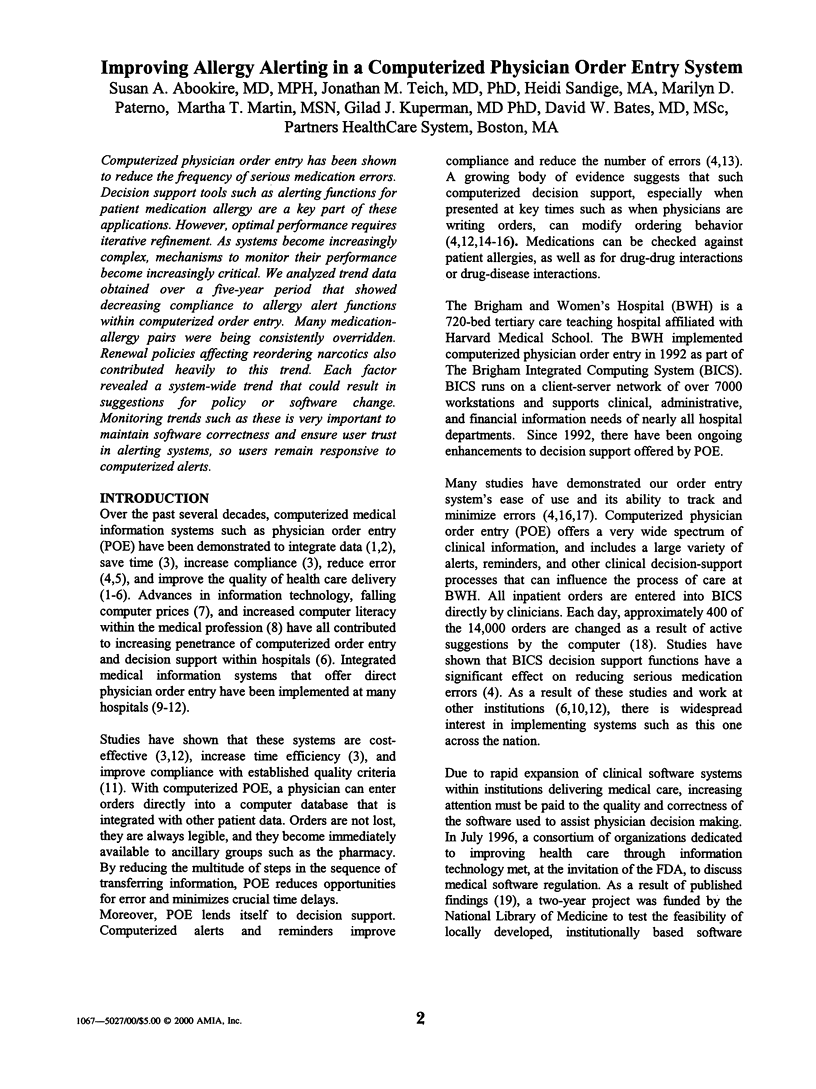
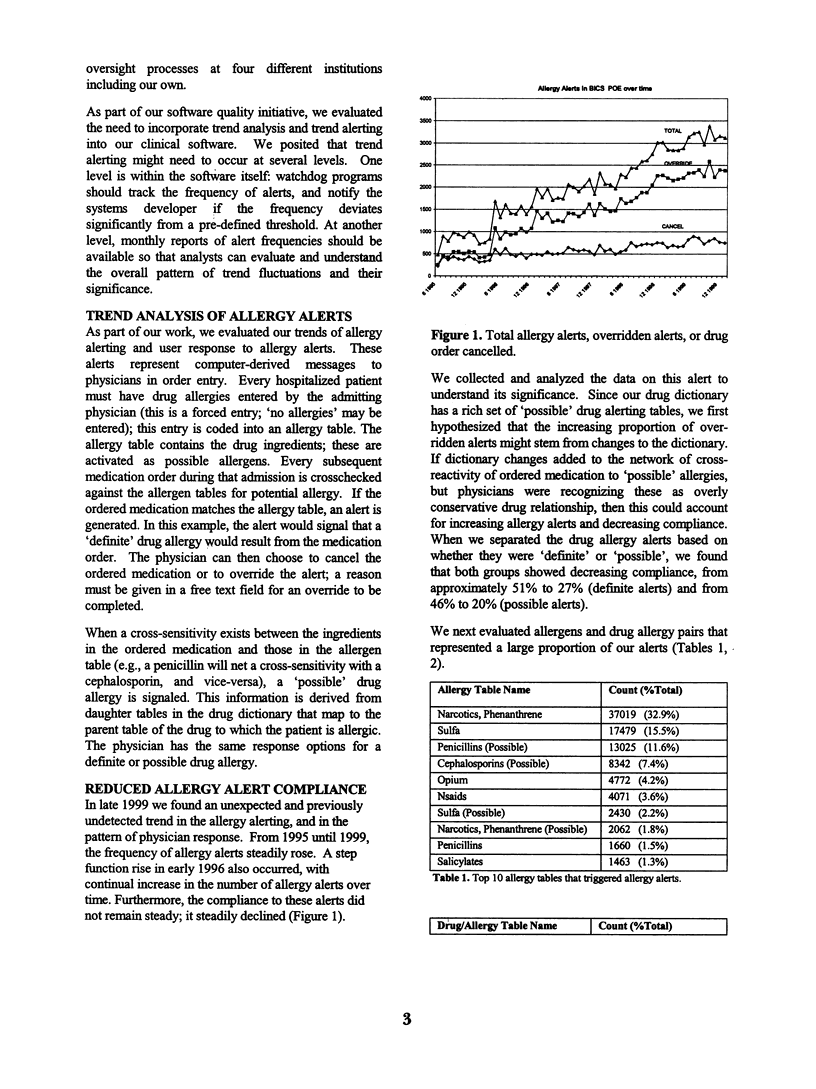
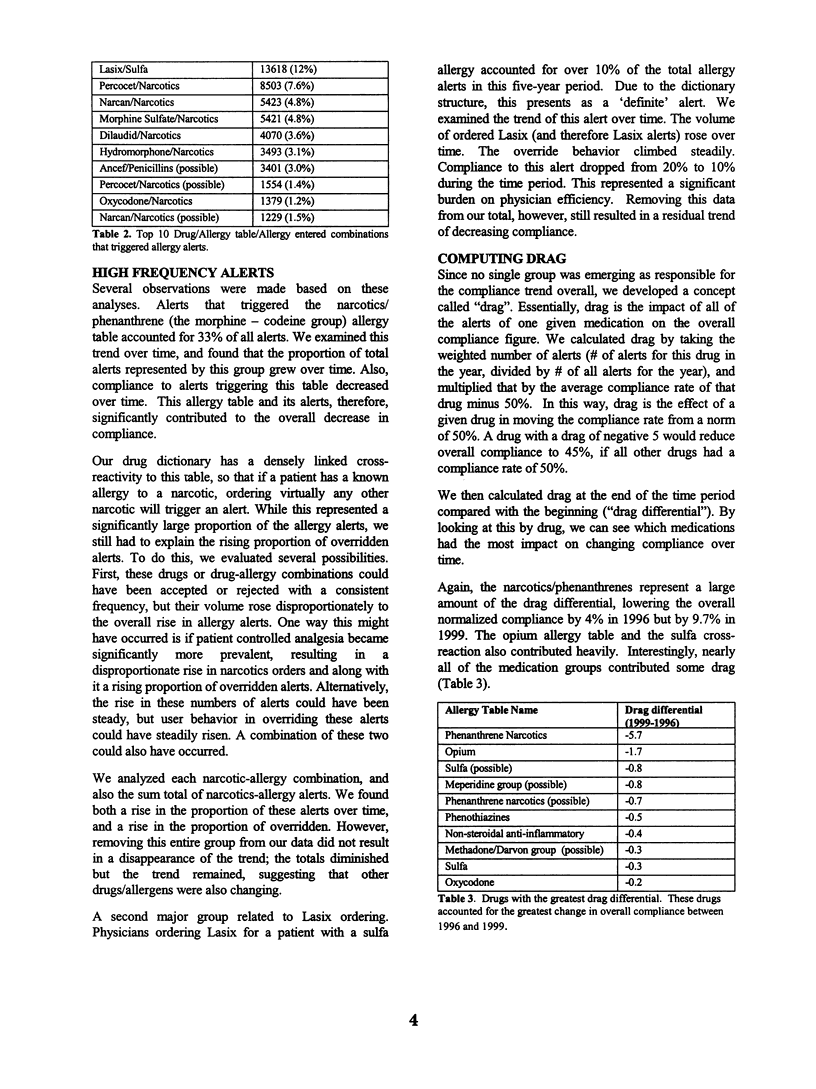
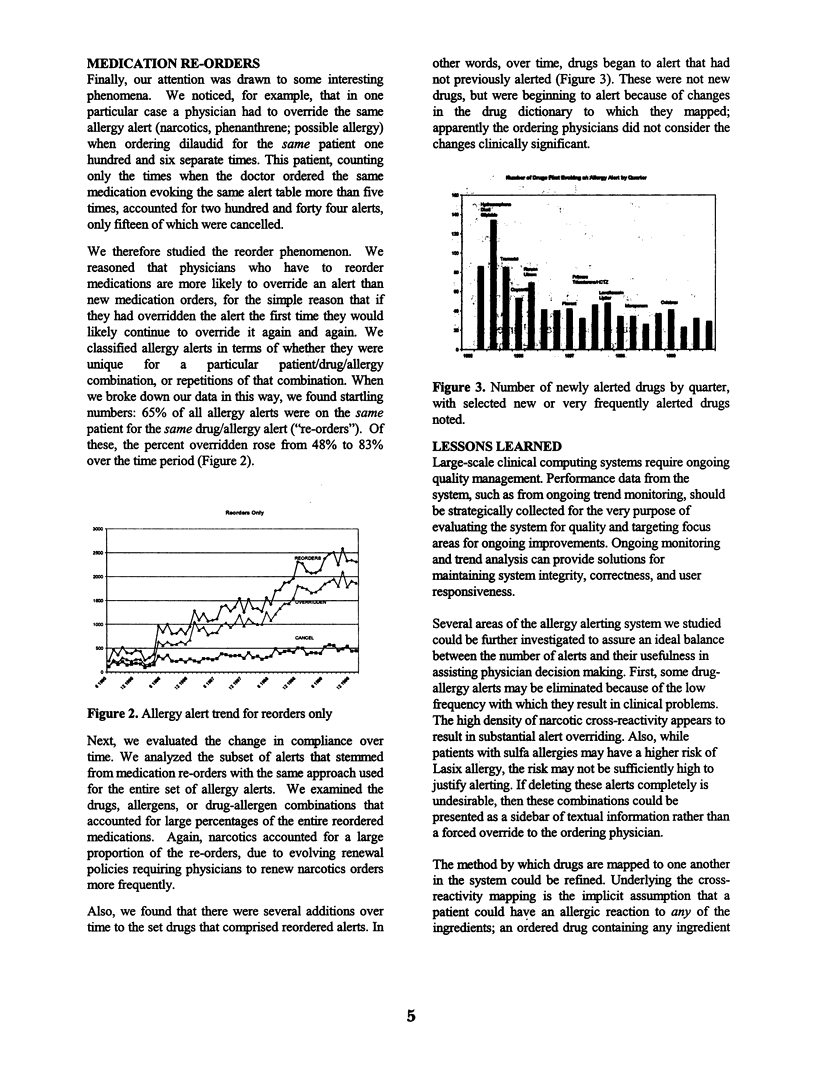
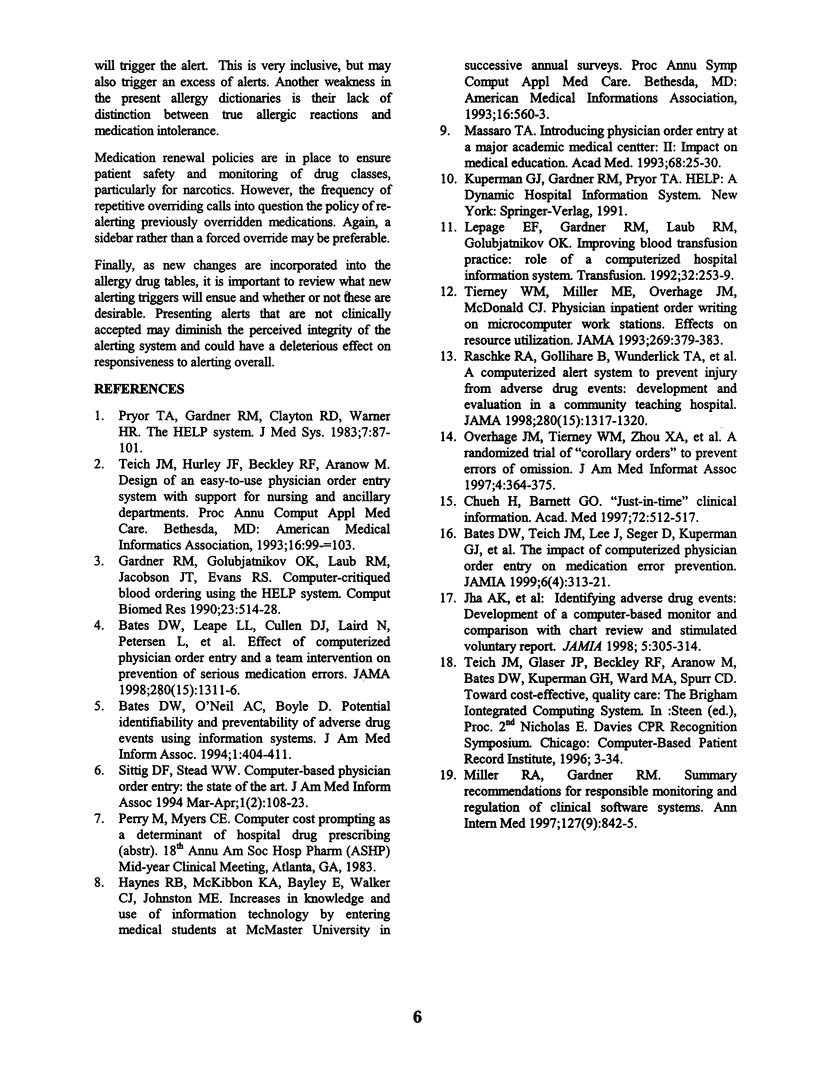
Selected References
These references are in PubMed. This may not be the complete list of references from this article.
- Bates D. W., Leape L. L., Cullen D. J., Laird N., Petersen L. A., Teich J. M., Burdick E., Hickey M., Kleefield S., Shea B. Effect of computerized physician order entry and a team intervention on prevention of serious medication errors. JAMA. 1998 Oct 21;280(15):1311–1316. doi: 10.1001/jama.280.15.1311. [DOI] [PubMed] [Google Scholar]
- Bates D. W., O'Neil A. C., Boyle D., Teich J., Chertow G. M., Komaroff A. L., Brennan T. A. Potential identifiability and preventability of adverse events using information systems. J Am Med Inform Assoc. 1994 Sep-Oct;1(5):404–411. doi: 10.1136/jamia.1994.95153428. [DOI] [PMC free article] [PubMed] [Google Scholar]
- Bates D. W., Teich J. M., Lee J., Seger D., Kuperman G. J., Ma'Luf N., Boyle D., Leape L. The impact of computerized physician order entry on medication error prevention. J Am Med Inform Assoc. 1999 Jul-Aug;6(4):313–321. doi: 10.1136/jamia.1999.00660313. [DOI] [PMC free article] [PubMed] [Google Scholar]
- Chueh H., Barnett G. O. "Just-in-time" clinical information. Acad Med. 1997 Jun;72(6):512–517. doi: 10.1097/00001888-199706000-00016. [DOI] [PubMed] [Google Scholar]
- Gardner R. M., Golubjatnikov O. K., Laub R. M., Jacobson J. T., Evans R. S. Computer-critiqued blood ordering using the HELP system. Comput Biomed Res. 1990 Dec;23(6):514–528. doi: 10.1016/0010-4809(90)90038-e. [DOI] [PubMed] [Google Scholar]
- Lepage E. F., Gardner R. M., Laub R. M., Golubjatnikov O. K. Improving blood transfusion practice: role of a computerized hospital information system. Transfusion. 1992 Mar-Apr;32(3):253–259. doi: 10.1046/j.1537-2995.1992.32392213810.x. [DOI] [PubMed] [Google Scholar]
- Massaro T. A. Introducing physician order entry at a major academic medical center: II. Impact on medical education. Acad Med. 1993 Jan;68(1):25–30. doi: 10.1097/00001888-199301000-00004. [DOI] [PubMed] [Google Scholar]
- Miller R. A., Gardner R. M. Summary recommendations for responsible monitoring and regulation of clinical software systems. American Medical Informatics Association, The Computer-based Patient Record Institute, The Medical Library Association, The Association of Academic Health Science Libraries, The American Health Information Management Association, and The American Nurses Association. Ann Intern Med. 1997 Nov 1;127(9):842–845. doi: 10.7326/0003-4819-127-9-199711010-00014. [DOI] [PubMed] [Google Scholar]
- Overhage J. M., Tierney W. M., Zhou X. H., McDonald C. J. A randomized trial of "corollary orders" to prevent errors of omission. J Am Med Inform Assoc. 1997 Sep-Oct;4(5):364–375. doi: 10.1136/jamia.1997.0040364. [DOI] [PMC free article] [PubMed] [Google Scholar]
- Pryor T. A., Gardner R. M., Clayton P. D., Warner H. R. The HELP system. J Med Syst. 1983 Apr;7(2):87–102. doi: 10.1007/BF00995116. [DOI] [PubMed] [Google Scholar]
- Raschke R. A., Gollihare B., Wunderlich T. A., Guidry J. R., Leibowitz A. I., Peirce J. C., Lemelson L., Heisler M. A., Susong C. A computer alert system to prevent injury from adverse drug events: development and evaluation in a community teaching hospital. JAMA. 1998 Oct 21;280(15):1317–1320. doi: 10.1001/jama.280.15.1317. [DOI] [PubMed] [Google Scholar]
- Sittig D. F., Stead W. W. Computer-based physician order entry: the state of the art. J Am Med Inform Assoc. 1994 Mar-Apr;1(2):108–123. doi: 10.1136/jamia.1994.95236142. [DOI] [PMC free article] [PubMed] [Google Scholar]
- Tierney W. M., Miller M. E., Overhage J. M., McDonald C. J. Physician inpatient order writing on microcomputer workstations. Effects on resource utilization. JAMA. 1993 Jan 20;269(3):379–383. [PubMed] [Google Scholar]


